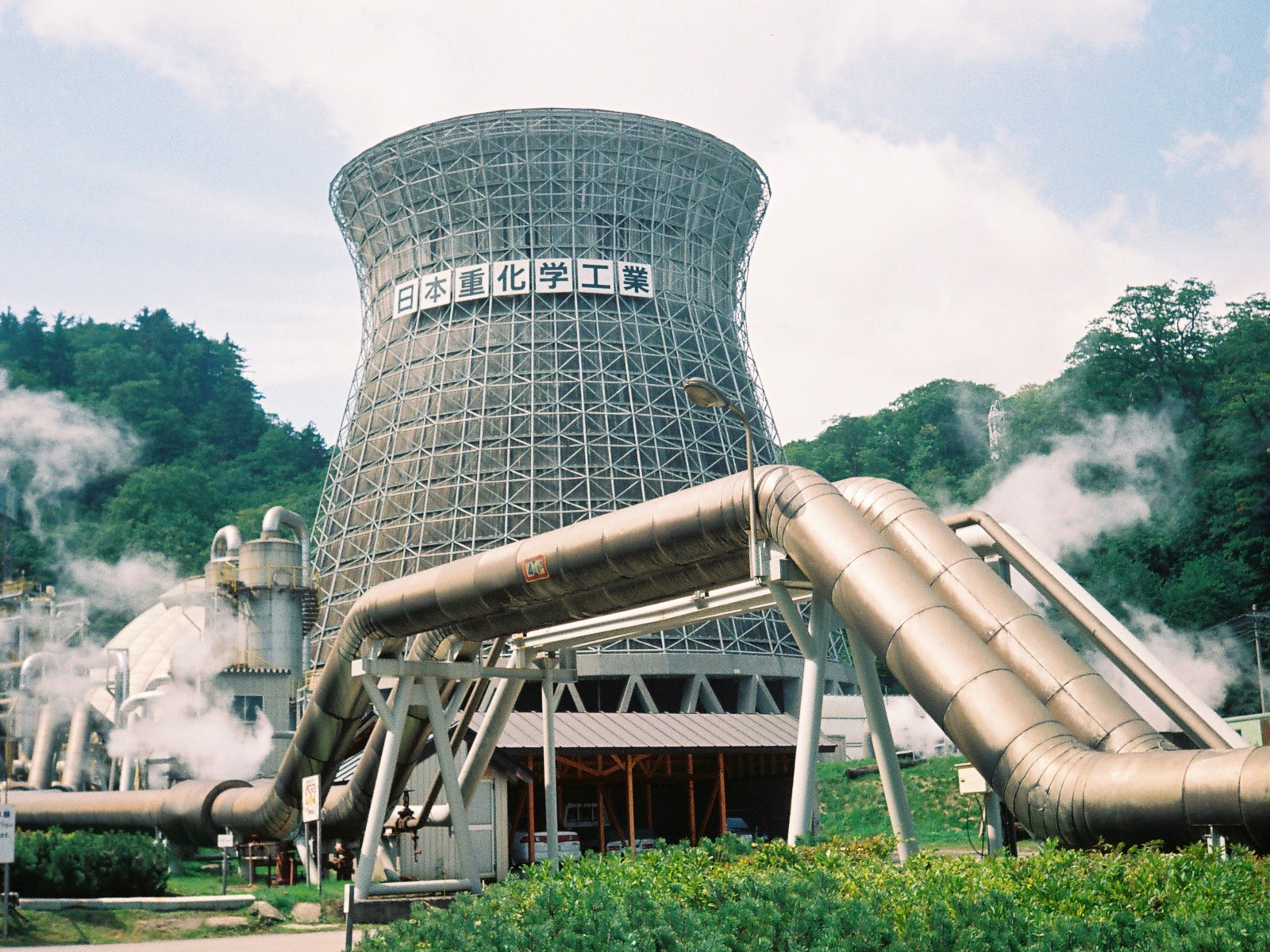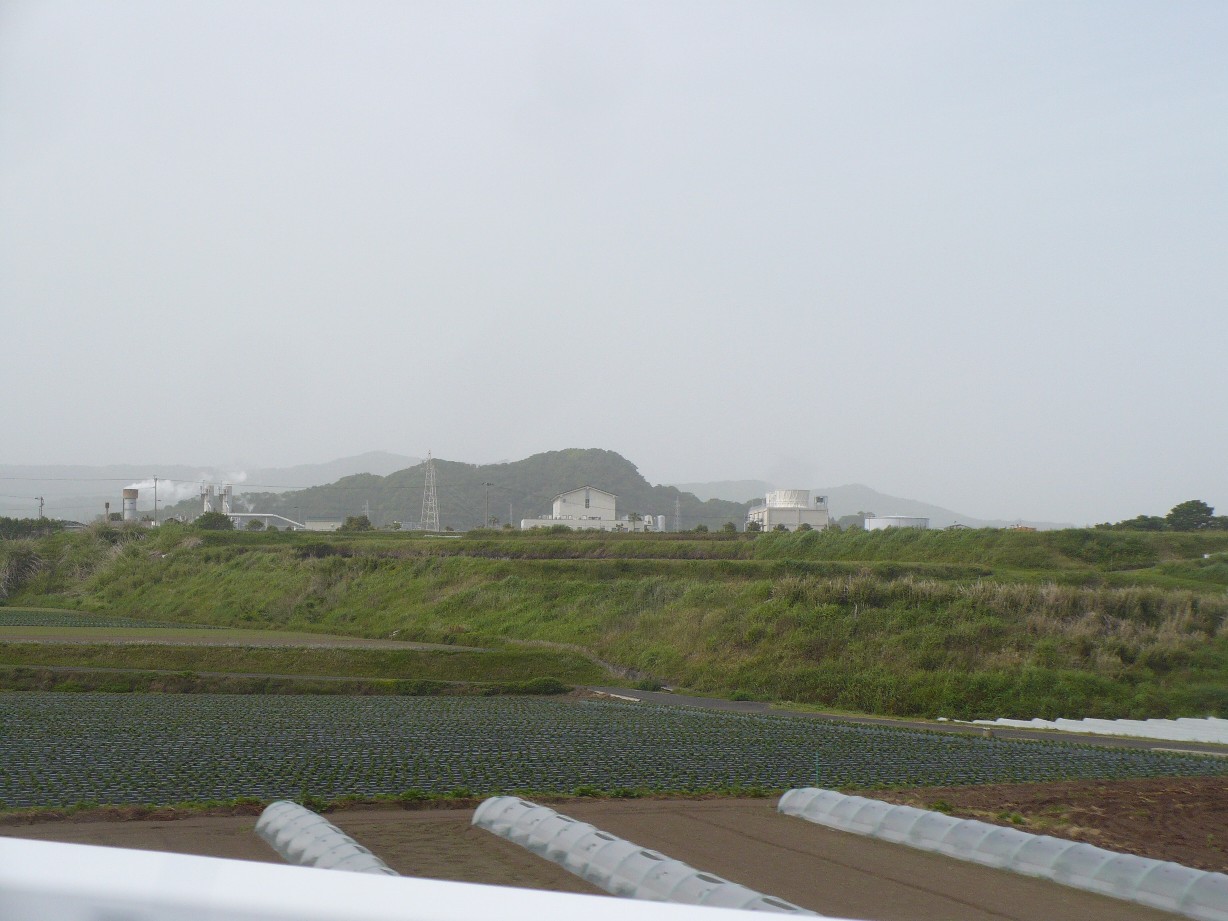Geothermal power in Japan on:
[Wikipedia]
[Google]
[Amazon]
 Japan has favorable sites for
Japan has favorable sites for
 As of 2003, 20 geothermal power plants are in operation at 18 locations in Japan.
As of 2003, 20 geothermal power plants are in operation at 18 locations in Japan.
 Japan has developed advanced technologies for the exploration, development, utilization and monitoring of geothermal resources. Due to the stagnant domestic geothermal sector, most of the technologies have been used in overseas development in recent years. Japan provided about 67% of all the turbines used in geothermal power stations in the world in the last 10 years.
Japan has developed advanced technologies for the exploration, development, utilization and monitoring of geothermal resources. Due to the stagnant domestic geothermal sector, most of the technologies have been used in overseas development in recent years. Japan provided about 67% of all the turbines used in geothermal power stations in the world in the last 10 years.
Electrical Japan: Google Maps of Power Stations (Geothermal)
{{Asia topic , Geothermal energy in
 Japan has favorable sites for
Japan has favorable sites for geothermal power
Geothermal power is electrical power generated from geothermal energy. Technologies in use include dry steam power stations, flash steam power stations and binary cycle power stations. Geothermal electricity generation is currently used in 2 ...
because of its proximity to the Izu–Bonin–Mariana Arc
The Izu–Bonin–Mariana (IBM) arc system is a plate tectonics, tectonic plate convergent boundary in Micronesia. The IBM arc system extends over 2800 km south from Tokyo, Japan, to beyond Guam, and includes the Izu Islands, the Bonin Island ...
. In 2007, Japan had 535.2 MW of installed electric generating capacity, about 5% of the world total. Geothermal power plays a minor role in the energy sector in the country: in 2013 it supplied 2596 GWh of electricity, representing about 0.25% of the country's total electricity supply.
Development of new geothermal power stations essentially stopped since the mid 1990s, mainly due to the strong resistance from local communities. Most of the potential sites are located in government-protected areas and in tourist destinations, thanks to the presence of traditional hot springs or onsen
In Japan, are the country's hot springs and the bathing facilities and traditional inns around them. As a volcanically active country, Japan has many onsens scattered throughout all of its major islands. There are approximately 25,000 hot ...
.
Local communities in these areas are often dependent on revenue from tourists visiting onsen, and are opposed to geothermal developments because of the negative impact that the industry may have on the scenery and the resulting damage to the tourism industry and the local economy.
However, interest in geothermal energy has been increasing in recent years due to the Japanese energy crisis following the Fukushima disaster and the subsequent closure of most of the country's nuclear power stations. Businesses and the government are currently considering over 60 possible sites for new geothermal power development. Estimates put the total capacity potential of geothermal power at 23 GW, the third largest amount in the world after the United States and Indonesia.
An estimation suggests that about 1,500 hot water wells and springs could generate as much as 723 MWe without additional drillings.
Power stations
Technology
 Japan has developed advanced technologies for the exploration, development, utilization and monitoring of geothermal resources. Due to the stagnant domestic geothermal sector, most of the technologies have been used in overseas development in recent years. Japan provided about 67% of all the turbines used in geothermal power stations in the world in the last 10 years.
Japan has developed advanced technologies for the exploration, development, utilization and monitoring of geothermal resources. Due to the stagnant domestic geothermal sector, most of the technologies have been used in overseas development in recent years. Japan provided about 67% of all the turbines used in geothermal power stations in the world in the last 10 years.
History
The country's first experimental geothermal power station was opened in 1925 inBeppu
is a city in Ōita Prefecture on the island of Kyushu, Japan. As of March 31, 2017, the city had a population of 122,643
, Ōita Prefecture
is a prefecture of Japan located on the island of Kyūshū. Ōita Prefecture has a population of 1,136,245 (1 June 2019) and has a geographic area of 6,340 km2 (2,448 sq mi). Ōita Prefecture borders Fukuoka Prefecture to the northwest, Kumam ...
. However, research in geothermal energy was slowed down by the Second World War. The first full scale geothermal power generation plant was Matsukawa in Iwate Prefecture
is a prefecture of Japan located in the Tōhoku region of Honshu. It is the second-largest Japanese prefecture at , with a population of 1,210,534 (as of October 1, 2020). Iwate Prefecture borders Aomori Prefecture to the north, Akita Prefectur ...
, owned by Nihon Heavy Chemical Industory Corp. The plant started operating in 1966 with a capacity of 9.5 MW.
In 1967, Otake Geothermal Power station in Ōita Prefecture, owned by Kyushu Electric Power
(, OSE: 9508, ) is a Japanese energy company that provides power to 7 prefectures (Fukuoka, Nagasaki, Ōita, Saga, Miyazaki, Kumamoto, Kagoshima), and recently, to some parts of Hiroshima Prefecture. Its shortened name of is sometimes used ...
, launched with 11 MW. After these first generation facilities, which were considered large scale experimental plants, from the mid-1970s new generation more efficient geothermal plants were opened. Until the mid-1980s, these were typically mid-sized plants with capacities of around 50 MW. Starting from the late 1980s more advanced technologies allowed for the economical exploration and development of even smaller geothermal resources, allowing the launch of several smaller scale plants.
Total generation reached 500 MW in 1996.
In April 2011, Japanese Ministry of the Environment issued a "Study of Potential for the introduction of Renewable Energy" report.http://www.env.go.jp/earth/report/h22-02/full.pdf 平成21年度 再生可能エネルギー導入ポテンシャル調査(pdf) It has shown total 19.14GW of Japanese geothermal resource potential.伊藤義康、 『分散型エネルギー入門』、講談社、2012年5月20日第1刷、、p.94-95
See also
*List of geothermal power stations
This is a list of operational geothermal power stations with a current installed capacity of at least 10 MW.
The Geysers in California, United States is the largest geothermal power station in the world with a nameplate capacity
Nameplate ...
*Energy in Japan
Energy in Japan refers to energy and electricity production, consumption, import and export in Japan. The country's primary energy consumption was 477.6 Mtoe in 2011, a decrease of 5% over the previous year.
The country lacks significant do ...
*Electricity sector in Japan
The electric power industry in Japan covers the generation, transmission, distribution, and sale of electric energy in Japan. Japan consumed 995.26 TWh of electricity in 2014.
Before the 2011 Fukushima Daiichi nuclear disaster, about a quarter ...
*Hydroelectricity in Japan Hydroelectricity is the second most important renewable energy source after solar energy in Japan with an installed capacity of 50.0 gigawatt (GW) as of 2019. According to the International Hydropower Association Japan was the world's sixth largest ...
*Solar power in Japan
Solar power in Japan has been expanding since the late 1990s.
The country is a major manufacturer and exporter of photovoltaics (PV) and a large installer of domestic PV systems, with most of them grid connected.
Japan has a solar irradiance of ...
*Wind power in Japan
In Electricity sector in Japan, Japan's electricity sector, wind power generates a small proportion of the country's electricity. It has been estimated that Japan has the potential for 144 gigawatts (GW) for onshore wind and 608 GW of offshore w ...
*Renewable energy by country
This is a list of renewable energy topics by country and territory. These links can be used to compare developments in renewable energy in different countries and territories and to help and encourage new writers to participate in writing about ...
References
External links
Electrical Japan: Google Maps of Power Stations (Geothermal)
{{Asia topic , Geothermal energy in